It’s a Jarmusch-y World; We’re Just Living in it.
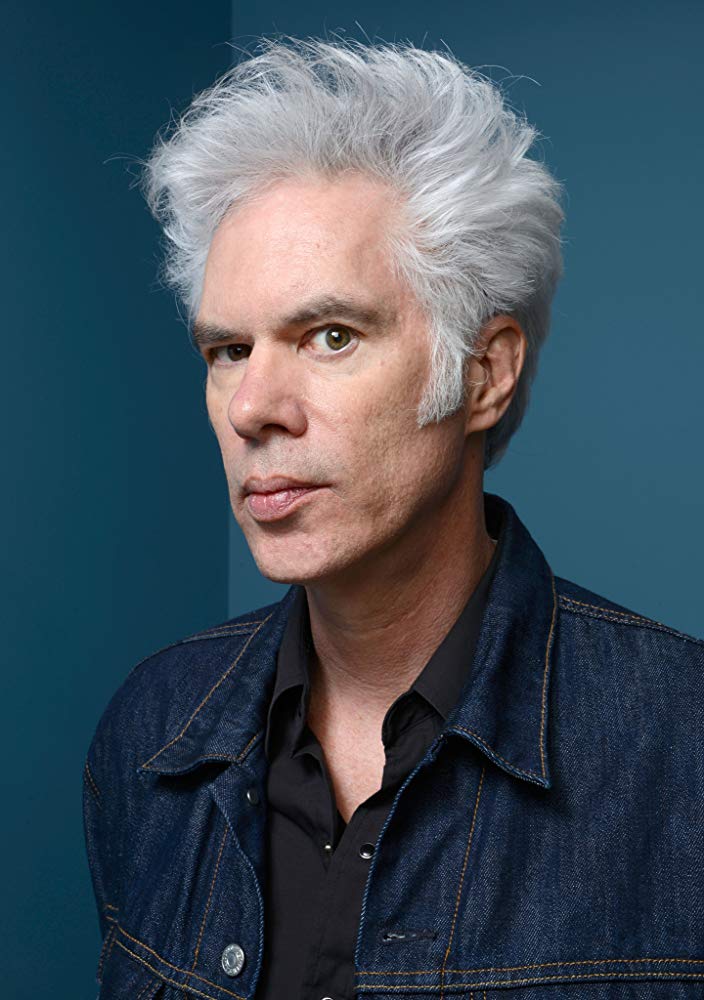 When someone asks me who some of my favorite directors are, I forget to include Jim Jarmusch. What, I ask, is the deal with that? Best I can figure, Jarmusch is has always operated far enough on the fringes of American filmmaking, that it’s all too easy to glance at the overall mass, and not see him out there, doing his own thing.
When someone asks me who some of my favorite directors are, I forget to include Jim Jarmusch. What, I ask, is the deal with that? Best I can figure, Jarmusch is has always operated far enough on the fringes of American filmmaking, that it’s all too easy to glance at the overall mass, and not see him out there, doing his own thing.
Out there in the fields of independent moviemaking, Jarmusch has been long established as one of its foremost figures. Not to oversell Jarmusch’s own organic coolness, but the fact is that he seemingly doesn’t even need to try. With his trademark zapped-up shock of white hair and an expression and diction that straddles “comically dour” and “laconically bemused”, the filmmaker is a latter day counterculture legend who might’ve never been comfortable in that scene. Yet, Jarmusch knows all the best people, in both film and music.
What would any given Jarmusch film be without the talents of folks like Tom Waits? Tilda Swinton? John Lurie? Adam Driver? Good people, outsiders, locked into a mundane existence; a world that Neil Postman described as “amusing itself to death”. The characters of Jarmusch’s world, often living on the lower rungs, have come to terms with the decay and entropy all around them, often defying mainstream priorities via heartfelt art, deep music, engaging personal interactions, and generally amusing themselves into life.
The fact that Jarmusch started off as a poet in a time when poetry was radically shifting from a pursuit of literary mastery to an open embrace of quirk, culture and the as-is here-and-now is the real key to his often transcendent cinema.
From the stark rambling of his indie landmark Stranger Than Paradise (1984) and its rundown Florida environs to the darkly wacky New Orleans ramble of Down by Law (1986) to the vampiric rides through forgotten Detroit in one of his several genre exercises, Only Lovers Left Alive (2013), and so many stops in between and beyond, it’s the texture and vibe of these places that we are so strongly left with. Jarmusch takes us to these places, as only he can, or would. The windshield’s point of view, so often employed, is a decompressed filmic experience, utterly ordinary yet somehow, above that. Bewitching. He put a spell on me.
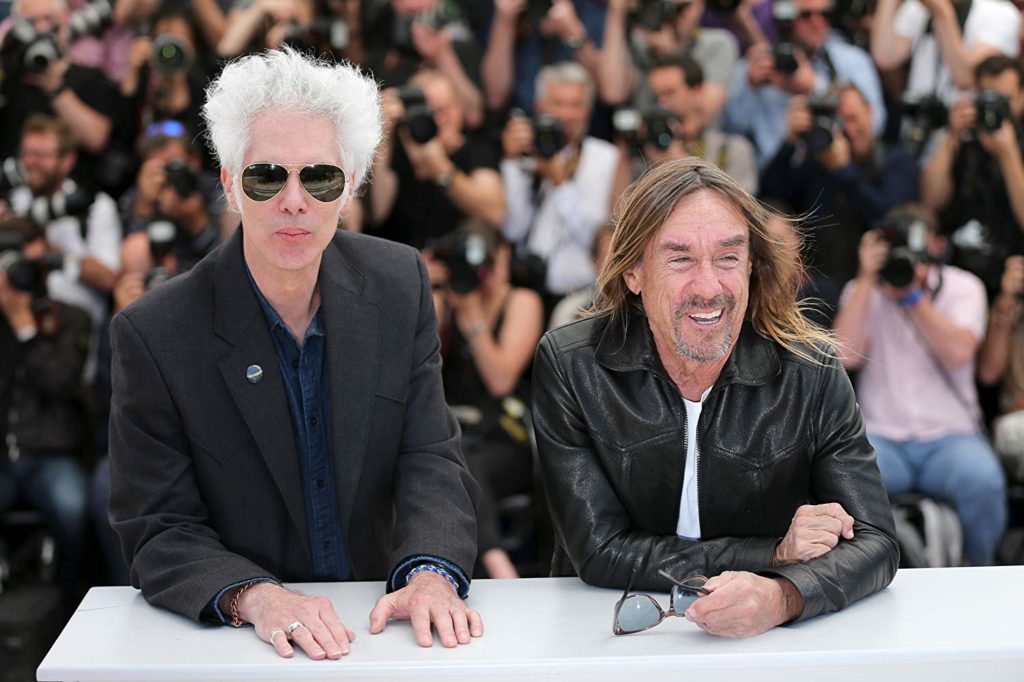
Jarmusch with Iggy Pop, at a narrow table.
“My thing is love of cinema.”, he says on his Q&A special feature on the Criterion DVD of his film, Night on Earth. Notoriously an insatiable cinephile, he proudly wears his directorial influences (Aki Kaurismäki, John Cassavetes, Federico Fellini, and so many others) on his black coat sleeves. Mentored by the likes of Nicolas Ray and Sam Fuller, and helping to launch the career of French director Claire Denis.
Speaking of his black coat sleeves… a quick sidebar: Though I initially considered Jarmusch a kind of arrogant pretentious “cool kid” with a movie camera, I came around with his great film’s Ghost Dog: Way of the Samurai (1999), and via DVD, Down by Law. Amid the cinephilia and muttering, smoking, outsider quality of his work, I started to see a frankly unexpected empathy. What clinched it was a moment on a DVD bonus feature associated with his very first film, Permanent Vacation (1980). In cold, bombed-out New York City, Jarmusch and someone else knocked on the door of an obviously dilapidated dwelling. A twenty-something girl answered (if memory serves, not the person they were looking for), looking frigid and strung out. As the other person tried to explain their visit, Jarmusch immediately shed his long black coat and put it on the girl. That unflinching act of instant selflessness has stuck with me. Maybe it’s why this month’s “Film Admissions” feature is Jim Jarmusch.
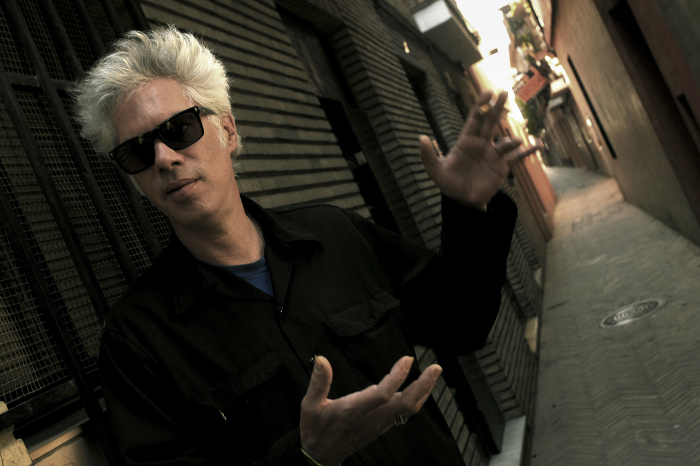
The fact that Jarmusch started off as a poet in a time when poetry was radically shifting from a pursuit of literary mastery to an open embrace of quirk, culture and the as-is here-and-now is the real key to his often transcendent cinema. We get to gaze slowly between the cracks of both society and conventional filmmaking. It’s The New Poetry, New York to the core, but rarely unfolding there. It’s a punk mentality on a lonely ride at night. It’s people, in all their awkwardness, colliding, clashing, and carrying on. The soundtrack is always great.
For those of us that on some level eschew plot in favor of colorful characters and cinematic experience, the continuing filmography of Jim Jarmusch is a preferred way to travel. Of course, not everyone feels the same way about it, as we’ll see below. Travel forth, my friends, as myself and a number of ZekeFilm contributors each explore a different Jarmusch movie for the first time. Bring your coat.
– Jim Tudor
Mystery Train
1989, JVC Entertainment, dir. Jim Jarmusch
by Robert Hornak
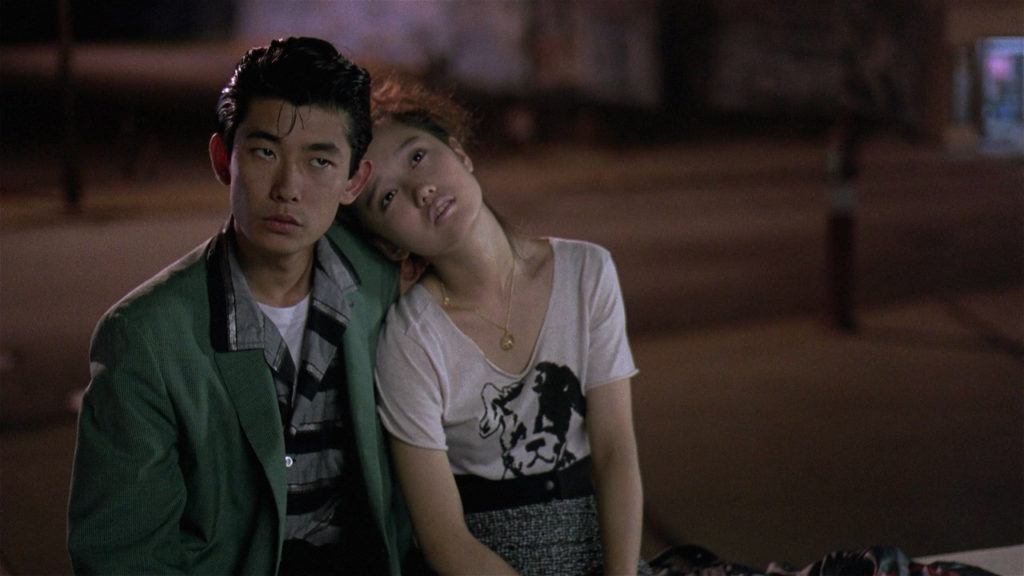
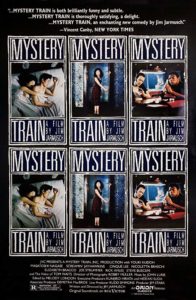 A Yokohama boy with a rockabilly swoop and a way with a lighter (looking every bit like a Japanese Jarmusch) and his game and bubbly hometown gal pal arrive in Memphis on a quest to walk the streets that Elvis walked, reminding us of the deep and wide touch of American pop culture across the world, especially the irresistible drawing power of Elvis’s brand of gyrating sexuality. They’ve traveled a long way only to find a kind of melancholy suffusing the brick buildings and quiet streets. Just then, the movie unfurls into an anthology that also includes a displaced Roman woman who has an Elvis sighting in a run-down motel room (the motel is the nexus of all the stories, begging the question: why not Mystery Motel?), and an extended ride-along with Steve Buscemi and his drinking buddies trying to outrun their unintended killing of a convenience store clerk.
A Yokohama boy with a rockabilly swoop and a way with a lighter (looking every bit like a Japanese Jarmusch) and his game and bubbly hometown gal pal arrive in Memphis on a quest to walk the streets that Elvis walked, reminding us of the deep and wide touch of American pop culture across the world, especially the irresistible drawing power of Elvis’s brand of gyrating sexuality. They’ve traveled a long way only to find a kind of melancholy suffusing the brick buildings and quiet streets. Just then, the movie unfurls into an anthology that also includes a displaced Roman woman who has an Elvis sighting in a run-down motel room (the motel is the nexus of all the stories, begging the question: why not Mystery Motel?), and an extended ride-along with Steve Buscemi and his drinking buddies trying to outrun their unintended killing of a convenience store clerk.
The whole thing is tied together by the spirit of Elvis, sometimes literally, but at least all across the soundtrack and in the painted portraits adorning the various motel rooms we visit. I don’t know if it’s supposed to be meaningful or just another Jarmuschian non-sequitur, but the portraits age as we see them – first the young, fabulous Elvis, then a slightly older version, and finally the sequined Vegas incarnation. If I related to anything in this movie, it was those paintings, and the sensation of getting much older through the running time.
What Mystery Train has most in its favor is Jarmusch’s clear love for place and his devotion to a certain brand of characters. In the film, the motel is rendered a revolving door of quirked-out misfits bouncing off each other like fish in a neon tank. What it has against it is letting that be all there is. It is, for good or bad, depending on your taste, of its time to a fault, the quintessential ’90s indie movie made in 1989, rolling out like the Rosetta stone of loose, straight-faced oddness, portions of it so droll as to be positively comatose, and many stretches feeling like the characters are waiting for the audience to fill in their dialogue for them.
All this is no surprise, and fairly par for the course for Jarmusch’s movies, which to me all feel like something he never intended to be seen by anyone but himself. This one presents characters so idiosyncratic they should be put into a museum of the peculiar. If the movie as a whole weren’t so insular, certain moments would come off as precious – say, a girl lighting her boyfriend’s cigarette with her feet – but in the world he creates, such things reflect mundane day-in-the-life. The problem for me is he creates characters I like enough to wish they weren’t just floating in a context-deficient void of existential dopiness.
Limits of Control
2009, Focus Features, dir. Jim Jarmusch
by Jonathan Leithold-Patt
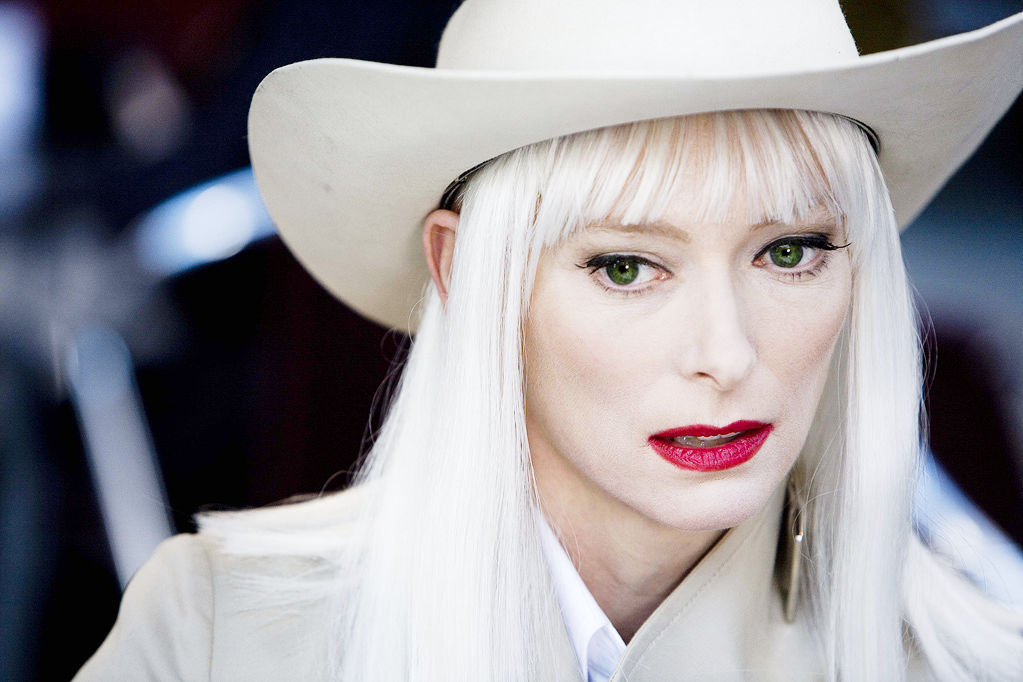
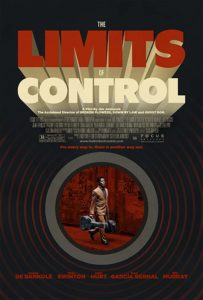 At its best, art allows us to see the world through new eyes, provisioning us with aesthetic experiences that have the capacity to refresh and recalibrate our perception. Film, with its privileged photographic access to the “real,” is especially well equipped at doing this: by literally rearranging space and time into new perceptual forms, it can make us see and feel the world in ways that our everyday experiences can’t permit. Jim Jarmusch gets this. His best films – fastidiously constructed, teasingly oblique – slide us almost imperceptibly into another subjectivity, another consciousness. It is the subjectivity of the protagonist, of Jarmusch, of nobody in particular. But it is a subjectivity that reveals, above all, that reality is but a perspective. Like art, it is a cultural system of signs and concepts that have become collectively naturalized.
At its best, art allows us to see the world through new eyes, provisioning us with aesthetic experiences that have the capacity to refresh and recalibrate our perception. Film, with its privileged photographic access to the “real,” is especially well equipped at doing this: by literally rearranging space and time into new perceptual forms, it can make us see and feel the world in ways that our everyday experiences can’t permit. Jim Jarmusch gets this. His best films – fastidiously constructed, teasingly oblique – slide us almost imperceptibly into another subjectivity, another consciousness. It is the subjectivity of the protagonist, of Jarmusch, of nobody in particular. But it is a subjectivity that reveals, above all, that reality is but a perspective. Like art, it is a cultural system of signs and concepts that have become collectively naturalized.
So much of the thrill of The Limits of Control (2009), then, is in how rigorously it denaturalizes such systems, makes them seem arbitrary and malleable. Jarmusch has made a career of doing this to both the quotidian (urbanity in Stranger Than Paradise and Down by Law) and the film-generic (the western in Dead Man and horror in Only Lovers Left Alive), crafting worlds where the familiar comes to seem sharply, ineffably strange, but The Limits of Control goes further, plunging us into a reality whose operating principles remain not only alien, but willfully opaque. No Jarmusch film has been so enigmatic, so intent on withholding and confounding. The film is a chimera, a self-aware piece of modernist aestheticism (asceticism?) that stands apart in Jarmusch’s oeuvre even as it seems to distill to its purest essence his distinct combination of the languidly minimalist and the wryly gnomic.
Indeed, The Limits of Control feels like something of a self-reflexive compendium of the filmmaker’s predilections, an apogee and emblem of his method and style. Dispensing entirely with exposition while whittling down narrative to an austere procession of cryptic symbols and audiovisual refrains, it is composed of all the pregnant silences, droll nonchalance, and formal repetitions that have marked his filmography, but that are here foregrounded to a heightened degree. Jarmusch has focused on laconic, impassive figures before and after The Limits of Control, but Isaach de Bankolé’s Lone Man, reminiscent of Alain Delon’s Jef in Le Samouraï (1967), might be the most quintessentially Jarmuschian. We follow him as he wanders through Spain in a supernaturally self-possessed calm, his phlegmatic (in)expression never changing even as the bewitching Andalusian landscapes and a perpetually nude woman (Paz de la Huerta) vie for his attention. Jarmusch depicts his routine and rituals in a methodical, recursive structure he would later revisit to more humanizing effect in Paterson (2016). It goes like so: Lone Man does tai chi in his apartment. He goes to Madrid’s Museo Nacional Centro de Arte Reina Sofia and stares for a while at a single painting, then leaves. He visits a café and orders two espressos, in two separate cups, and is met by a different mysterious contact, who always asks him, “You don’t speak Spanish, right?” He replies “No,” and the contact muses on matters pertaining to the arts before exchanging with him color-coded matchboxes. He removes a piece of paper bearing indecipherable writing from his box and swallows it with a swig of espresso. It is clear he is on a mission, but the nature or purpose of this mission are never fully disclosed.
So what, exactly, is Jarmusch up to here? Is this just a slick exercise in deconstructing a crime thriller while repudiating all the typical mainstream excesses that usually attend it? Is this Jarmusch’s passive-aggressive rebuke of Hollywood’s imperialist stranglehold on the market? (The Big Bad of the film, after all, is named “American”). Or is it just a fancy lark, the slab of self-indulgent, arid stylistic wheel-spinning so many critics in 2009 dismissed it as, a movie in search of a meaning? I think while certain typically pejorative words feel pertinent here – “exercise,” “arid,” “even “self-indulgent” – The Limits of Control is altogether something shrewder and more generous, a Last Year at Marienbad-esque Rorschach test that grants audiences luxuriant room to fill in its meaning, or to merely wander through its hall of mirrors. The film is flagrantly postmodern in this way. Its refusal to fix narrative, its insistence on semantic instability, its dissolution of boundaries geographical and discursive (“the universe has no center and no edges,” a repeated line in the film goes), and its globalist perspective (the international cast plus Lone Man’s border-crossing, postcolonial identity) make it a text of potent, serpentine multivalence. Rather ironically due to his formal mastery, Jarmusch is not playing the autocratic auteur delivering onto his audience a coherent meaning. In fact he is actively confronting us with our constitutive role in meaning-making by leaving so many gaps, attuning us to details that may or may not have significance, prompting an awareness of our interpretive processes as we try to make sense of his obscure, symphonic arrangement of elements. We are, in fact, made to be quite like the Lone Man, engaged in the activities of looking, sensing, cognizing; assuming the ennobled roles of spectator and aesthete.
Engaged, of course, to the extent that Jarmusch’s crystalline formalism, aided by Christopher Doyle’s seductive cinematography, and his bevy of koan-like riddles, make one tantalized rather than frustrated and resistant. For this cinephile, I was rapt: I hung on to every cut and graphic surface, every line and color and ambient sound from Boris’s haunting soundtrack, induced into another consciousness as I contemplated the film’s uncanny world, taking pleasure in interpretation without settling on a unitary explanation. It was both a purely enjoyable aesthetic experience and a stimulating conceptual one.
But perhaps those dissenting critics inadvertently proved what Jarmusch was getting at. However meticulously and deliberately one fashions an artwork – and The Limits of Control is nothing if not immaculately molded – they can never entirely tell the viewer what to think or how to feel. It is never complete without a free-thinking audience. Art may create structured experiences that usher us along certain aesthetic and ideological paths, but at its best, it acknowledges the power of spectators to continue, rethink, or even depart from those paths. Jim Jarmusch gets this.
Paterson
2016, Amazon Studios, dir. Jim Jarmusch
by Jeffrey Knight
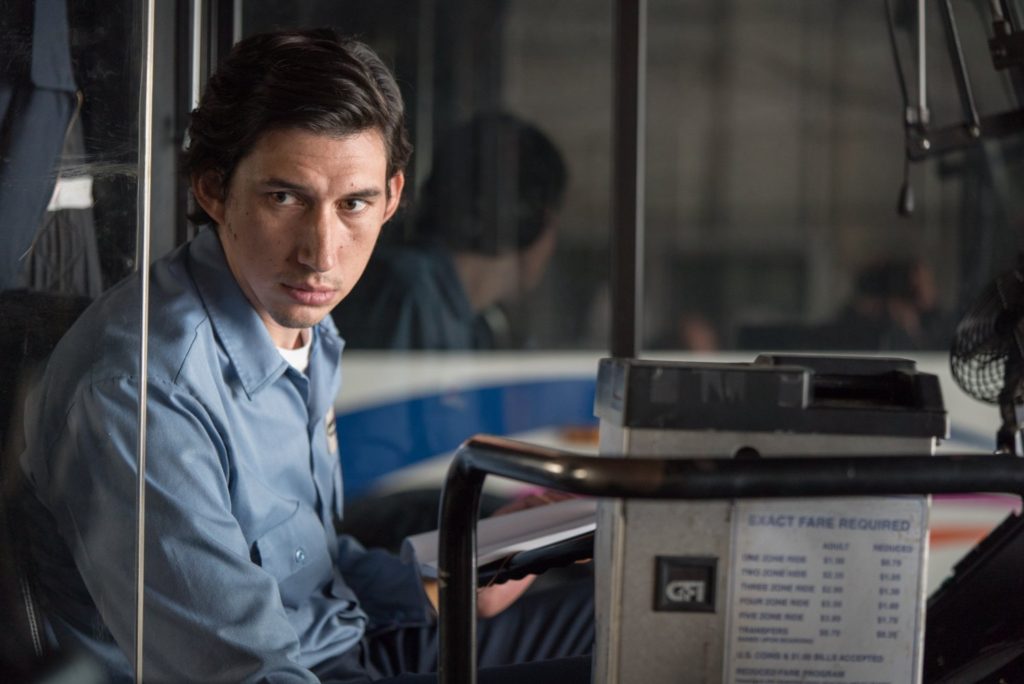
Adam Driver in PATERSON
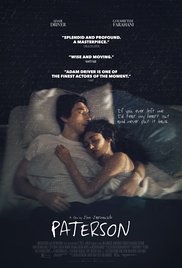 Jim Jarmusch once said in an interview that he would rather make a movie about a man walking his dog than one about the emperor of China. With Paterson he got his wish.
Jim Jarmusch once said in an interview that he would rather make a movie about a man walking his dog than one about the emperor of China. With Paterson he got his wish.
Watching Paterson I got the sense that one could, if one was so inclined, one could pull this film apart, frame by frame and dissect it and impart any number of meanings onto it- limited only by one’s imaginations and personal biases- much like the subjects of the documentary Room 237 did with Kubrick’s The Shining. Paterson seems like its the tip of a (to mix my metaphors here) rabbit hole that its gleefully inviting the viewer to go down. Recurring images, the numerous sets of twins, the repeated use of the word shotgun in different contexts… Paterson is full of repeating patterns and motifs.
Which is appropriate, seeing as how this is the story of a poet- albeit an amateur poet who writes for self edification as opposed to publication. Paterson, the man (played by Star Wars’ Adam Driver), lives in Paterson, NJ. He lives with his girlfriend Laura (played by Golshifteh Farahani, Exodus: Gods and Kings), a painter and designer who dreams of learning how to play guitar and become a country music star. He lives with his dog Marvin, whose nightly walks Paterson uses as an excuse to visit his neighborhood bar and have a beer. By day, Paterson is a bus driver, by night he writes his poetry in his battered journal.
Paterson explores the life of the eponymous bus driver/poet in his eponymous town over the course of one week, starting on Monday. Every day, Paterson wakes up to his alarm, goes to work, works on his poems during his breaks, comes home (straightens his mailbox), walks his dog and has his beer. Certain details change from day to day, but the overall pattern of his life remains the same.
In lesser hands, such repetitiveness would be boring, but Jarmusch knows just how much variation he needs to add to keep it engaging. Too little, and it’s too samey. Too much, and we fail to understand the rhythm. The events of any one day in this series are almost unremarkable, but together they form a picture of remarkable depth and significance. The triumphs and tragedies Paterson endures aren’t world-shaking events, but for him, and for this life of quiet contentment he leads, they are profound.
And thats the beauty of everyday life that Jarmusch was getting at with his quote, above. The lives of gods, emperors and extraordinary people can be thrilling, sure. But it’s in the daily routine, and more importantly, the breaks from that routine, there’s a richness to be found there. Paterson, the poet, finds his inspiration from the sights and sounds he sees everyday. Paterson the movie finds them there as well.
Stranger Than Paradise
1984, Cinesthesia Productions, dir. Jim Jarmusch
by Taylor Blake
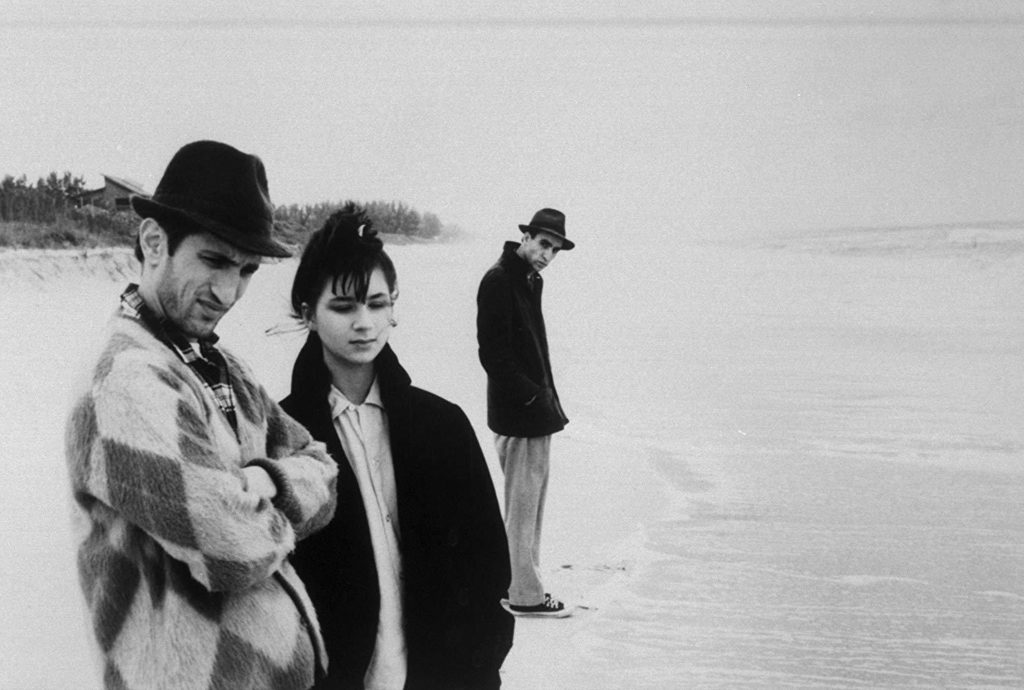
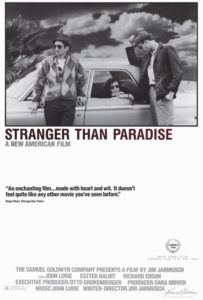 Stranger Than Paradise is my first outing with Jim Jarmusch, and candidly, I’m still deciding what to make of it.
Stranger Than Paradise is my first outing with Jim Jarmusch, and candidly, I’m still deciding what to make of it.
Another filmmaker could have told this story more efficiently, but Jarmusch doesn’t seem interested in efficiency. In a different version, this story of two cousins and a tagalong friend could have been juggled with more characters or (any) subplots, and where this film wraps could have been the midpoint. But Jarmusch seems more interested in sitting in realism, with all its awkward pauses and moments of boredom. And with three of the most directionless characters I’ve seen in a minute, there’s a lot of that to sit through. It feels like a precursor to last year’s The Florida Project, but with characters less likeable and a story about less in general.
Speaking of which, style reigns over story. The film is composed of a limited number of shots Jarmusch and Director of Photography Tom Dicillo set up, let run for a few minutes in one uninterrupted take, and then cut to black for a few seconds. When we return to our black-and-white world, we’re in a new place, or at least we’re seeing a new perspective on the same set.
What sets Stranger Than Paradise apart is also what makes it an artsy movie that gives artsy movies a bad rep to the general moviegoer. (The other kind would be esoteric films open to wide interpretation, like The Tree of Life.) That said, not everyone is a general moviegoer, and plenty of people at the Cannes and Sundance festivals in the ‘80s found a film to love. But with its minimal plot, barely emotive performances, and unusual cinematic style, it’s difficult to recommend. To be candid again, I don’t.
Down by Law
1986, Black Snake, dir. Jim Jarmusch
by Sharon Autenrieth
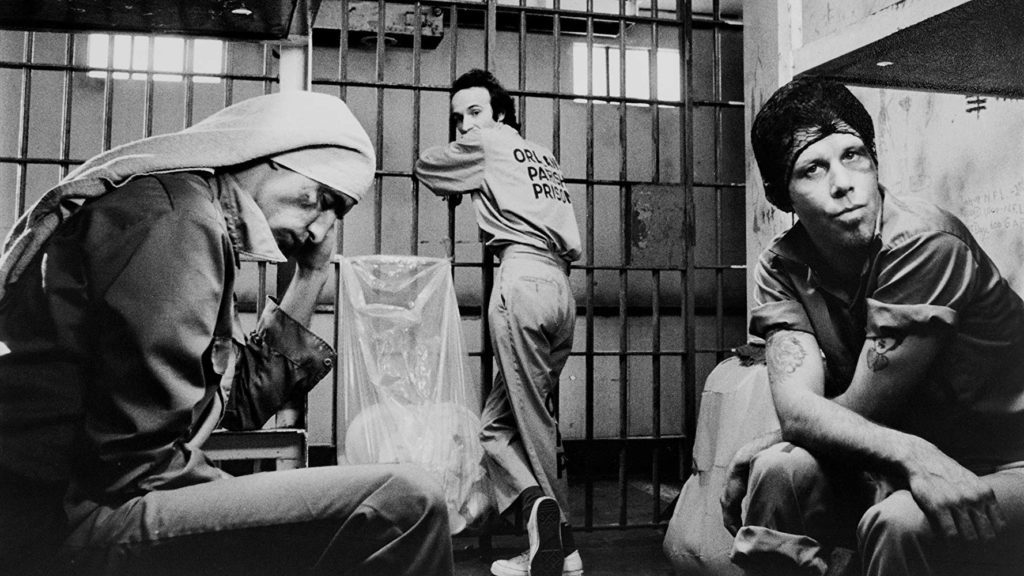
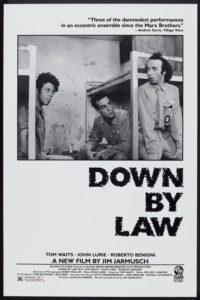 Down By Law is comedy and poetry and homage to more than one genre (noir, prison movie, buddy film), but it’s distinguished by Jim Jarmusch’s casting of three inimitable figures in its central roles. The setting is exceedingly seedy New Orleans – if there’s an underbelly to the underbelly, this is it – where a pimp, an unemployed disc jockey, and a card sharp all run afoul of the law. Zack (Tom Waits), the DJ, is too principled for his own good and his girlfriend, Laurette (Ellen Barkin) has had enough of his inability to hold down a job. In a rage she hurls his records into the street, an activity Zack regards impassively until she grabs his favorite shoes. Amidst the smashed detritus of his life, it’s only the shoes that he retrieves before getting suckered into driving a car across town for $1000. Unfortunately, there’s a dead body in the trunk.
Down By Law is comedy and poetry and homage to more than one genre (noir, prison movie, buddy film), but it’s distinguished by Jim Jarmusch’s casting of three inimitable figures in its central roles. The setting is exceedingly seedy New Orleans – if there’s an underbelly to the underbelly, this is it – where a pimp, an unemployed disc jockey, and a card sharp all run afoul of the law. Zack (Tom Waits), the DJ, is too principled for his own good and his girlfriend, Laurette (Ellen Barkin) has had enough of his inability to hold down a job. In a rage she hurls his records into the street, an activity Zack regards impassively until she grabs his favorite shoes. Amidst the smashed detritus of his life, it’s only the shoes that he retrieves before getting suckered into driving a car across town for $1000. Unfortunately, there’s a dead body in the trunk.
Jack (John Lurie) is a gaunt, almost spectral figure in a sleek suit. He, too, is caught up in a crime when a visit to a prospective working girl turns out to be a vice sting.
Zack and Jack wind up as cellmates in OPP (Orleans Parish Prison), shifting from hate, to irritation, to tolerance. It takes a third cellmate, Bob (Roberto Benigni) to produce friendship. Bob is a an Italian tourist who freely admits to having killed man, but insists he’s “a good egg”. He is cheerful even in the grim circumstances of the jail; practicing his English, sharing his love for Walt Whitman and “Bob” Frost, even leading the entire cell block in a rousing chant of “I scream, you scream, we all scream for ice cream.” Bob has also seen a lot of prison escape movies, and begins to get ideas about busting out. This leads to a number of scenes in which Zack, Jack, and Bob flee through the swamps of the bayou, with dogs, hunger, and fatigue hard on their heels.
It’s hard to explain why Down By Law is so funny, but Benigni certainly gets a great deal of credit for the film’s off-kilter humor. He was an unknown in the U.S. when Jarmusch cast him in the role of Bob, and he is entirely winsome. He manages to sell the tiniest details of his performance, even making the hiccups much funnier than they have a right to be; and his madly disheveled hair almost deserves its own cast credit. Benigni excels in far more than physical comedy, though. A scene in which he reminisces aloud about his mother as he cooks a rabbit is one of the film’s best.
Waits and Lurie both deliver, too. Zack and Jack are both very cool, very stylish losers, although of very different kinds. The movies out-of-time coolness is heightened by the rich black and white cinematography of Robby Muller, evoking the best of 50s noir in this 80s film.
I won’t spoil the ending, but it is hopeful beyond all reason. It is a magical, really, with the magic coming from Bob’s indomitable optimism. It may be, as Bob says the first time we see him, that “it’s a sad and beautiful world.” But Bob seems intent on seeing the beauty and there’s not a sad bone in his body. His spirit drags Zack and Jack out of more than one kind of prison.
Night on Earth
1991, JVC Entertainment, dir. Jim Jarmusch
by Jim Tudor
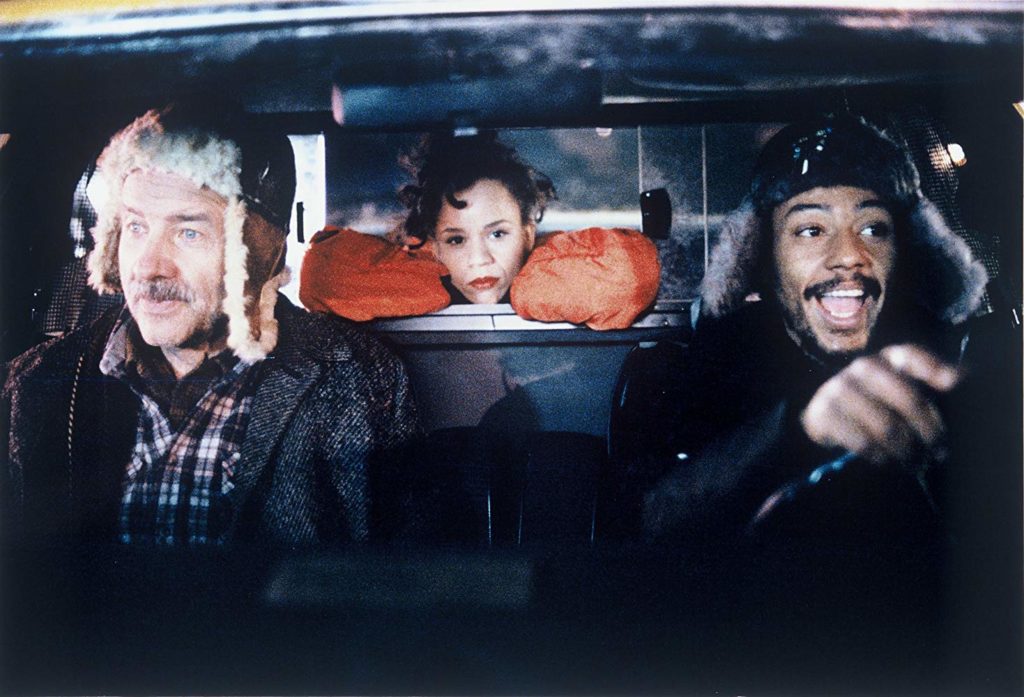
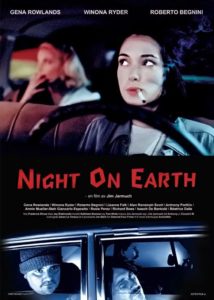 If Jim Jarmusch is indeed the world’s coolest travel guide in bona fide auteur skin, then the five part anthology Night on Earth is his most extensive tour. One night, five major cities, five cab rides. That’s it; that’s the movie.
If Jim Jarmusch is indeed the world’s coolest travel guide in bona fide auteur skin, then the five part anthology Night on Earth is his most extensive tour. One night, five major cities, five cab rides. That’s it; that’s the movie.
As one may guess, Night on Earth is almost entirely car-bound. Yet, it’s never claustrophobic. Rather, through the windshields and passenger windows, the cities are allowed to live, breathe, and make themselves known to us. Even though I may’ve never stepped foot in Los Angeles, New York City, Rome, Paris, or Helsinki, I came away feeling like I know them just a bit better. (The original intended title of the film was “lanewyorkparisromehelsinki”- all five city names mashed together in one long letter jumble. It was deemed cumbersome, and changed prior to release. Good move). In making this film, it’s clear that the filmmaker (Jarmusch is said to have written it in twelve days) is deeply interested in the temporary relationships that occur between total strangers amid a routine run of monetized transportation; relationships rendered all the more disposable since, as the director has articulated, the ride itself is never intended to be the memorable or important portion of taxi cab usage. People often spill their guts in cabs precisely because the driver is a stranger they will never see again.
Of course, the company is hard to beat. So is the soundtrack. Groovy, rumbling music by frequent Jarmusch collaborator Tom Waits accompanies and unifies the mundane but memorable journeys of Gena Rowlands’ upper crust casting agent and Winona Ryder’s grease-monkey driver, and the four other globally diverse rides that follow. What makes Night on Earth succeed in ways that elude most anthology films is the filmmaker’s control of the aesthetic and tempo. He makes it feel so easy.
Each driver/passenger interaction is unique to its locale, the interpersonal overriding the political or the sociological. Yes, Giancarlo Esposito’s character, the tightly-wound YoYo, has trouble hailing a cab in New York City. But his race (notoriously the real reason that black people routinely get passed by) is acknowledged just so, as opposed to being flagged by the film. Soon enough, YoYo’s riding with foreign newcomer Helmut (Armin Mueller-Stahl), an older cabbie who can’t speak much English, nor operate a motor vehicle in an acceptable manner. But nonetheless, these two bond; Helmut amused that their flappy hound dog hats are the same; Yoyo insisting, for their own safety and sanity, that he do the driving.
Interestingly, the film ends on a truly dour note, as the ride through Helsinki ramps up from drunken gripes to a soberingly sad story, courtesy of the the stern driver named Mika (played by the late Matti Pellonpää, a veteran actor of the films of Jarmusch friend and favorite, director Aki Kaurismäki; his character named after Kaurismäki’s brother). While it helps to know that this final potion of Night on Earth is a tribute to the Kaurismäki brothers, one is nonetheless taken aback that this often rambunctious film opts to go out on such a staid note. (Not unlike the Coen Brothers’ anthology The Ballad of Buster Scruggs).
The least engaging of the five portions, at least upon first viewing, is the Paris chapter. When a frustrated cabbie played stoically by Isaach de Bankolé picks up a strange and not unsexy blind woman (Béatrice Dalle), sniping and belittlement dominate the ride. If nothing else, the uncovered distorted eyes of Dalle’s character prove compellingly in keeping with her unapologetic character. The trip to remember, however, is the unhinged Rome portion, dominated by a wildly wound-up Roberto Benigni. Zipping like a madman around the hairpin streets of the ancient city, not realizing that his vision is obstructed by dark sunglasses, Benigni is a lightning bolt of lunacy in Jarmusch’s moribund world. In his antics, he is the primary challenge to an otherwise obvious takeaway that cab drivers let themselves suffer too much abuse. And, he’s all the validation that anyone needs that on Jarmusch’s Earth, personality travels father than cool.

